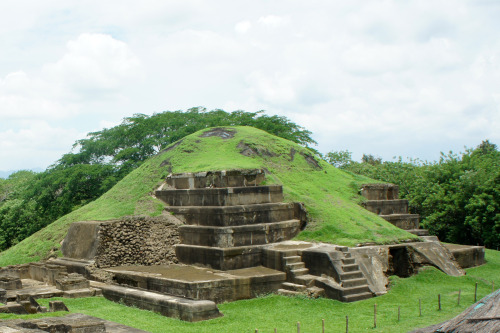ancientart:The Maya archaeological site of San Andrés, El Salvador. Shown in the first photo is stru
ancientart:The Maya archaeological site of San Andrés, El Salvador. Shown in the first photo is structure 1, and in the third, structure 5. Neither of these pyramids have been fully excavated, with particularly little work done on structure 5. The main plaza is visible in both the second and fourth photos.Human occupation of the site can be dated back to 900 BC, when it served as a small agricultural town. The ruins shown, and the peak period of San Andrés, however dates to its Maya occupation between 600-900 AD.San Andrés lies in the broad valley of the Sucio River, which has many mounds and apparently was thickly occupied in pre-Columbian times. San Andrés is the most interesting in the group in the area and the only one that has been systematically excavated. […] The major pyramid [see photo 1] rises in several tiers and has a stair on the north side. Construction is of adobe brick covered with lime plaster -similar to that used at Tazumal and Kaminaljuyu. […] The architectural and ceramic remains indicate the San Andrés was occupied during the Classic period and into the post-Classic. There is evidence of influence from the Guatemala highlands, as well as from Copán, where the plaza-acropolis arrangement of the structures is similar. Ceramics of Copán type are also found at San Andrés-Joyce Kelly, An Archaeological Guide to Northern Central America: Belize, Guatemala, Honduras, and El Salvador.After the Spanish Conquest, San Andrés became part of a colonial estate for cattle and indigo production. The site was later buried due to the Playón volcano eruption of 1658 AD.Photos courtesy & taken by Mario Roberto Duran Ortiz. -- source link
Tumblr Blog : ancientart.tumblr.com



